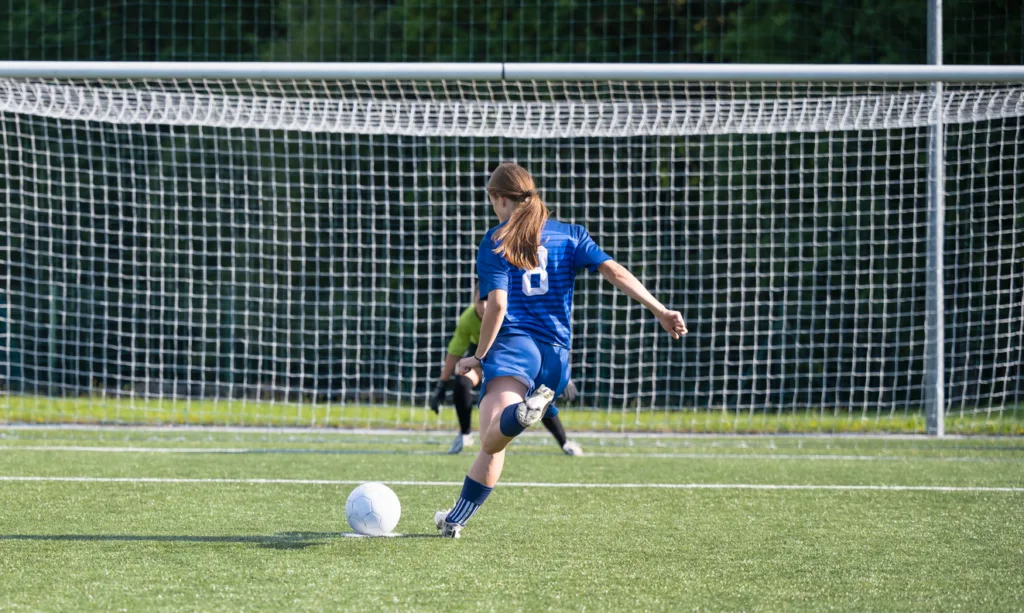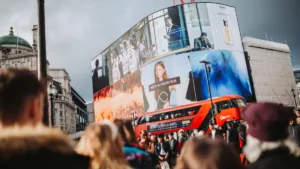Research by global influencer agency Billion Dollar Boy has revealed a collective increase of 15.6 million social media followers across the 736 players competing in the Women’s World Cup 2023 – driven predominantly by Instagram which accounted for 12.5m of the new followers.
The research, powered by Companion, Billion Dollar Boy’s proprietary influencer marketing platform, tracked 1,282 player social media accounts across Instagram, TikTok, X and YouTube to assess follower growth and engagement during the tournament (20th July 2023 – 20th August 2023) which influence athlete earnings potential from brand partnerships.
The results reveal the players with the largest growth in followers during the tournament. Swiss forward, Alisha Lehmann leads the way as the most followed female football player on Instagram, with a total of 14.91m followers – gaining a further 1.14m followers on the platform during the Women’s World Cup, further extending her lead on compatriot, Roger Federer (11.9m followers).
The top 10 players with the greatest growth in Instagram followers during the tournament features players that appeared in the Final – including Olga Carmona, who gained more than 236k followers after scoring the winning goal, and England goalkeeper, Mary Earpes.
| Player | Country | Position | Total Followers | New Followers | Rate of growth |
| Alisha Lehmann | Switzerland | Forward | 14,913,533 | 1,141,203 | 8% |
| Sam Kerr | Australia | Forward | 1,677,442 | 431,167 | 35% |
| Ary Borges | Brazil | Midfielder | 449,128 | 354,921 | 377% |
| Marta | Brazil | Forward | 2,922,786 | 293,262 | 11% |
| Olga Carmona | Spain | Defender | 366,080 | 256,348 | 234% |
| Mary Fowler | Australia | Forward | 264,111 | 216,598 | 456% |
| Linda Caicedo | Colombia | Forward | 700,762 | 199,990 | 40% |
| Mary Earps | England | Goalkeeper | 570,523 | 190,523 | 50% |
| Mackenzie Arnold | Australia | Goalkeeper | 229,150 | 181,145 | 377% |
| Michelle Alozie | Nigeria | Defender | 280,587 | 177,814 | 173% |
There is a strong correlation between overall number of followers at the start of the tournament and follower growth during, featuring a number of the sport’s global stars despite limited World Cup appearances. The top 10 includes players from Brazil and Switzerland whose teams failed to progress from the group stages, and Australia’s Sam Kerr who gained 431,167 followers during the tournament despite injury. Interestingly, on average, for every 1,000 followers a player had on Instagram at the start of the tournament, they would gain 60 new followers.
Exploring the data further provides other fascinating correlations. Minutes played also has an influence on follower growth, equivalent to an average of 85 new Instagram followers per minute played.
The results also suggest a correlation between goal scoring and follower growth, with each goal scored preceding an average increase of 20k new Instagram followers. For example, Brazil’s hat-trick hero during the first round of group stage fixtures, Ary Borges, gained 300k followers.
Combined across each of the four social media platforms the England team collectively saw the greatest increase in follower growth, gaining more than 2 million followers during the course of the tournament as they reached the final, followed by Brazil (1.98m) and hosts Australia (1.83m).
| Team | Total Followers | Total Growth | Rate of growth |
| England | 12,451,905 | 2,196,368 | 21% |
| Brazil | 11,208,991 | 1,976,640 | 21% |
| Australia | 4,655,257 | 1,832,238 | 65% |
| Switzerland | 25,579,727 | 1,700,628 | 7% |
| Colombia | 5,119,486 | 1,675,227 | 49% |
| Spain | 9,810,162 | 1,372,597 | 16% |
| USA | 24,619,338 | 879,052 | 4% |
| Nigeria | 3,453,602 | 780,452 | 29% |
| Sweden | 2,920,852 | 563,181 | 24% |
| Germany | 2,988,626 | 361,016 | 14% |
The number of social media followers – among other variables – is an important contributing factor towards determining a player’s potential earnings from brand collaborations on social media. Based on the mean Instagram following, in the UK market, the average player at the Women’s World Cup could command a fee of £1,225 per Instagram post – a substantial supplement for players given that the average Women’s Super League player earns between £25k – £27k annually. This figure rises to in excess of £121k for Alisha Lehmann.
Other players with unique profiles may be able to earn more per post, such as Nouhaila Benzina, who became first player to wear a hijab at the World Cup and gained 36k followers on Instagram during the tournament, rising to 84k followers in total; and Nigeria’s Michelle Alozie whose audience doubled in the days following Lauren James’s stamp on her and subsequent red card drama; and England’s iconic goalkeeper.
| Name | Country | Position | Total Followers | Estimated cost per Instagram post |
| Alisha Lehmann | Switzerland | Forward | 14,913,533 | £121,694 |
| Alex Morgan | USA | Forward | 10,232,697 | £83,499 |
| Alexia Putellas | Spain | Midfielder | 3,087,508 | £25,194 |
| Marta | Brazil | Forward | 2,922,786 | £23,850 |
| Megan Rapinoe | USA | Forward | 2,192,650 | £17,892 |
| Sam Kerr | Australia | Forward | 1,677,442 | £13,688 |
| Jordyn Huitema | Canada | Forward | 1,639,283 | £13,377 |
| Lieke Martens | Netherlands | Forward | 1,282,277 | £10,463 |
| Asisat Oshoala | Nigeria | Forward | 1,055,105 | £8,610 |
| Julie Ertz | USA | Midfielder | 976,126 | £7,965 |
Becky Owen, Chief Marketing & Innovation Officer at Billion Dollar Boy commented: “The remarkable aspect lies in how social media can fuel the career advancement of these exceptional athletes.
“This data documents the players’ journey to solidify their status within football communities while harnessing their independent social media accounts to command lucrative brand partnerships.
“In an arena where gender pay equality remains a documented challenge, the surge in match viewership and substantial social media expansion opens doors for these athletes to bridge the gap. Brands that seize the momentum of the Women’s World Cup and its growing popularity are poised to reap the greatest rewards. If they can get the partnerships right, there is an opportunity to reach new audiences that are engaging with the sport for the first time whilst aligning themselves with sports influencers to develop a highly symbiotic relationship.”
Irving Shark, Head of Product at Companion, added: “Companion’s research shows that the path to success for female footballers looking to grow their following is varied. While those with bigger audience generally found it easier to grow their following, exposure through game time, scoring goals and involvement in key tournament highlights can elevate the player’s public profile and lead to more lucrative brand partnership opportunities.
“Women’s football continues to grow in stature and provides unique sponsorship deals for brands and players that the men’s game simply can’t achieve.”









